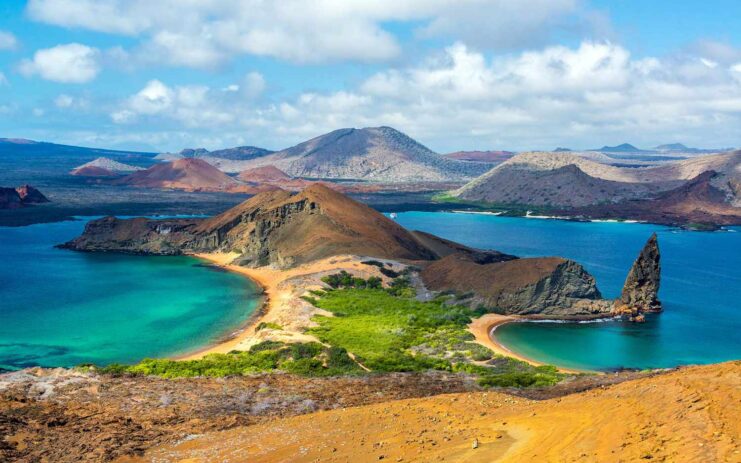The Galapagos Islands offer a one-of-a-kind experience that many dream about. The unique wildlife, striking landscapes, and pristine waters attract visitors who seek adventure and relaxation. There are countless sights to take in, but deciding where to start can be overwhelming.
An ideal way to explore the Galapagos is by booking a yacht charter. Galapagos yacht charter not only offers a luxurious experience, but it also provides access to remote islands and ensures comfort. Onboard, you can relax in a Jacuzzi, enjoy gourmet meals, and witness the islands’ stunning beauty.
For first-time travelers, knowing which spots to prioritize is key.
North Seymour Island: A Wildlife Wonderland
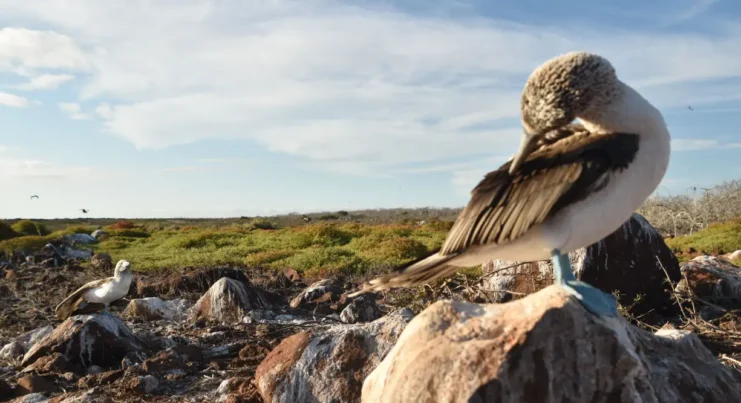
North Seymour Island is often one of the first stops for first-time visitors. It is a haven for wildlife. You’ll find blue-footed boobies, frigate birds, and land iguanas in large numbers. For many travelers, the chance to see the famous Galapagos sea lions is a highlight. They can often be found basking on the rocky shores or swimming in the surrounding waters. North Seymour provides a well-rounded introduction to the unique animals of the region.
Española Island: Bird Watchers’ Paradise
For bird enthusiasts, Española Island is the place to go. It is home to the waved albatross, which can only be found here. Along with that, you’ll see masked boobies, mockingbirds, and marine iguanas. Punta Suarez, on Española, is a key spot for observing large colonies of birds and other wildlife. The dramatic cliffs offer the perfect backdrop for photographers and nature lovers alike.
Bartolomé Island: Iconic Views and Clear Waters
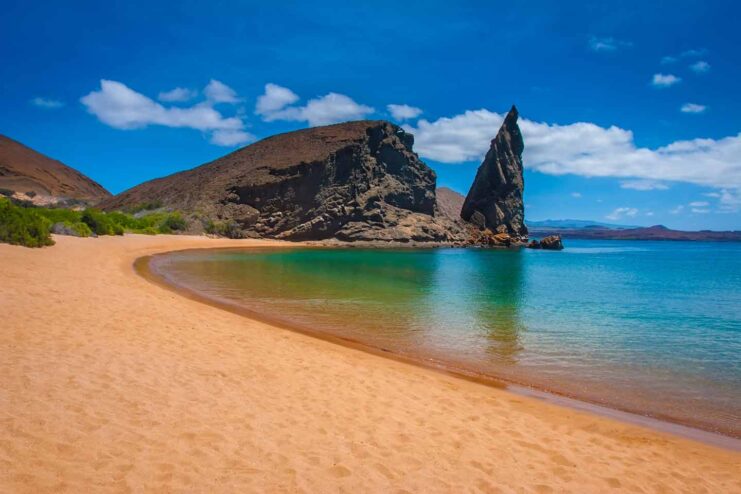
Bartolomé Island offers some of the most iconic views of the Galapagos. The climb to the top of the island is steep, but the panoramic view is worth it. Pinnacle Rock, one of the most recognized landmarks, juts out of the water and provides a stunning contrast against the turquoise sea. Bartolomé is also one of the best places to snorkel. The waters are teeming with vibrant marine life, and you may even spot Galapagos penguins swimming nearby.
Santa Cruz Island: The Charles Darwin Research Station
Santa Cruz Island is often the busiest, as it is home to the Charles Darwin Research Station. Here, visitors learn about the important conservation efforts taking place. The station is crucial for protecting the islands’ fragile ecosystems. While on Santa Cruz, visitors also have the opportunity to meet giant tortoises at a nearby sanctuary. These ancient creatures, with their slow movements and wise expressions, are among the most iconic symbols of the islands.
Isabela Island: Volcanoes and Vast Landscapes
Isabela Island is the largest of the Galapagos Islands and offers a diversity of landscapes. Travelers can explore lava fields, beaches, and forests. The island is home to several active volcanoes, including Sierra Negra, which has one of the largest craters in the world. A hike to the top of Sierra Negra provides sweeping views of the island and its surroundings. Isabela is also known for its marine life. You can swim alongside sea turtles, manta rays, and sharks in the crystal-clear waters.
Fernandina Island: The Unspoiled Beauty
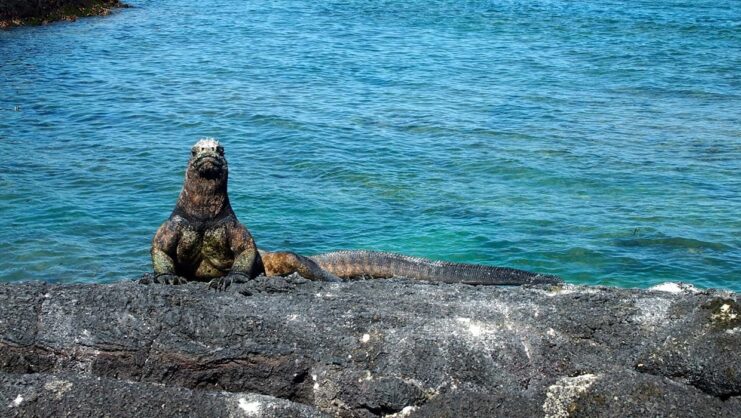
Fernandina Island remains one of the most pristine islands in the archipelago. It is home to thousands of marine iguanas, which can be seen sunbathing on the rocky shore. The island’s volcanic landscape is rugged, and its remote location makes it a quieter stop on many itineraries. For those seeking a more isolated experience, Fernandina provides an authentic view of the untouched beauty of the region.
Floreana Island: History and Scenic Spots
Floreana Island combines beautiful landscapes with historical significance. It was one of the first islands to be inhabited by humans, and it has a fascinating history involving pirates and early settlers. The island is also home to Post Office Bay, where visitors can leave postcards that other travelers will deliver in person. Floreana’s Devil’s Crown, a sunken volcanic crater, is another popular spot. Its surrounding waters are ideal for snorkeling, with abundant marine life, including tropical fish and sea lions.
Genovesa Island: A Haven for Birdlife
Known as “Bird Island,” Genovesa is a paradise for bird watchers. The island’s steep cliffs and forests are home to thousands of birds, including red-footed boobies, storm petrels, and short-eared owls. Genovesa’s calm waters are also great for snorkeling. The island is less crowded, making it an excellent choice for travelers seeking a more serene environment.
Santiago Island: History and Wildlife
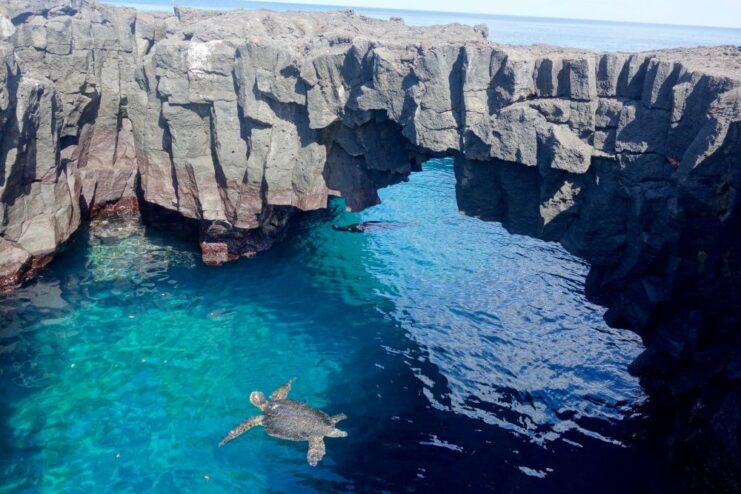
Santiago Island, also known as James Island, offers an array of wildlife experiences. It has a rich history, as it was once visited by Charles Darwin during his voyage. Today, travelers come to see the fur seals, hawks, and flamingos that live on the island. The black lava rocks along the coast create a dramatic landscape. Santiago’s beaches, particularly Puerto Egas, are also great for exploring tide pools and observing marine life.
Rabida Island: The Red Sand Beaches
Rabida Island stands out due to its red sand beaches. The island’s unique color comes from the high iron content in the volcanic rocks. Rabida is a great spot for snorkeling, with its calm waters and vibrant marine life. You might encounter sea turtles, rays, and colorful fish swimming around you. The island is relatively small, but its striking landscape and rich wildlife make it a must-visit destination.
South Plaza Island: A Contrast of Colors
South Plaza Island is a small yet visually striking destination. The island’s landscape is covered with bright red and green vegetation, contrasting beautifully with the turquoise waters and dark lava rocks. South Plaza is also home to a large colony of land iguanas, which are often seen sunbathing in the sun. The cliffs of the island are great for watching seabirds, including swallow-tailed gulls and tropicbirds.
When to Visit
The Galapagos Islands can be visited year-round, but different times offer varying experiences. The warmer season, which runs from December to May, provides calmer seas and better snorkeling conditions. During the cooler season, which lasts from June to November, the waters are rougher, but the wildlife activity increases. No matter when you visit, the islands will always offer something extraordinary to see.
Conclusion: A Trip of a Lifetime
For first-time travelers, choosing where to go in the Galapagos can be challenging. Each island offers unique sights, wildlife, and experiences. Whether you’re interested in bird watching, hiking, snorkeling, or simply relaxing, there is an island that will suit your needs. A trip to the Galapagos is not just about seeing wildlife. It’s about stepping into a world where nature reigns supreme. From the panoramic views on Bartolomé to the wildlife-rich shores of North Seymour, every stop promises an unforgettable experience.

